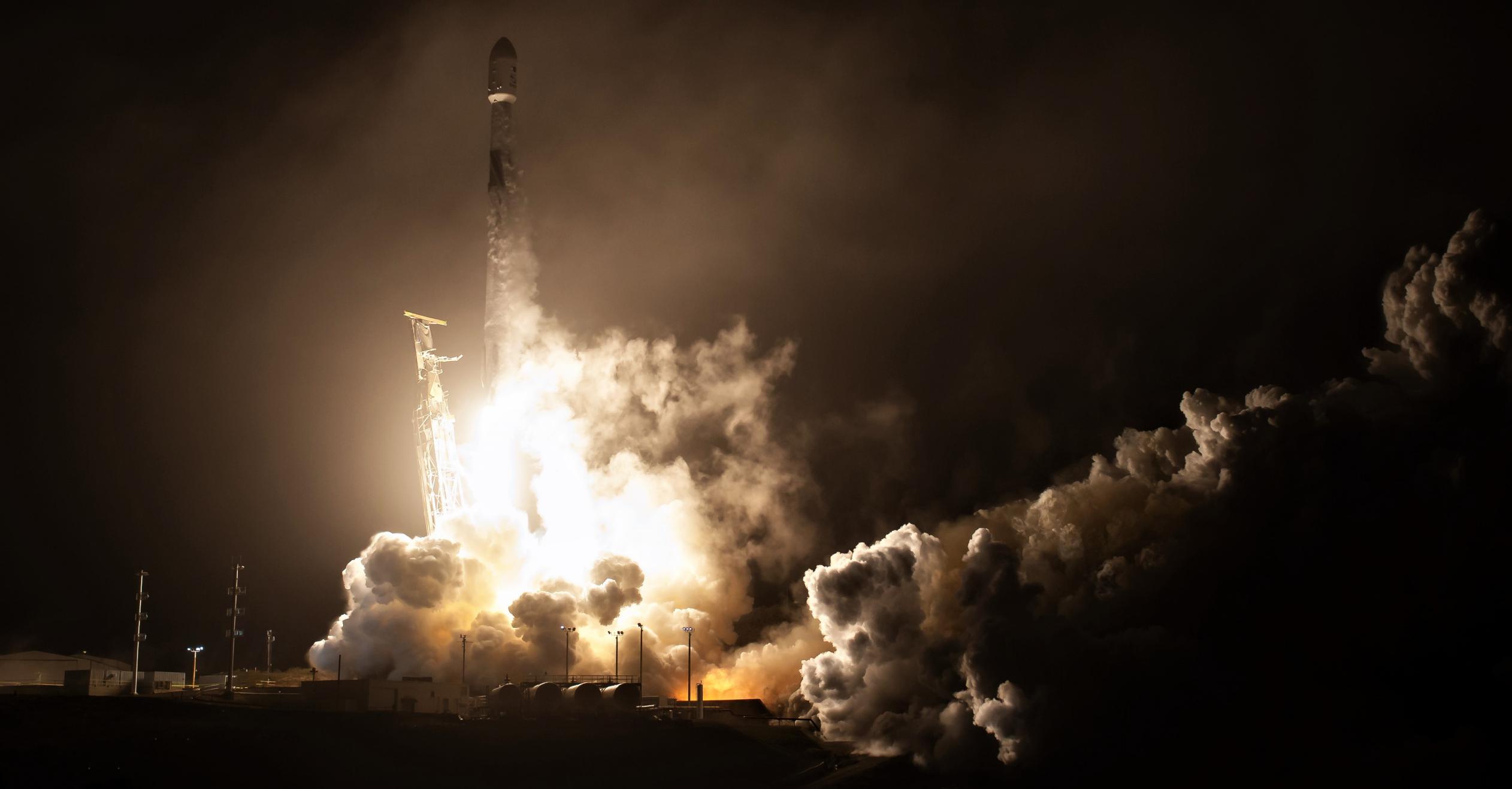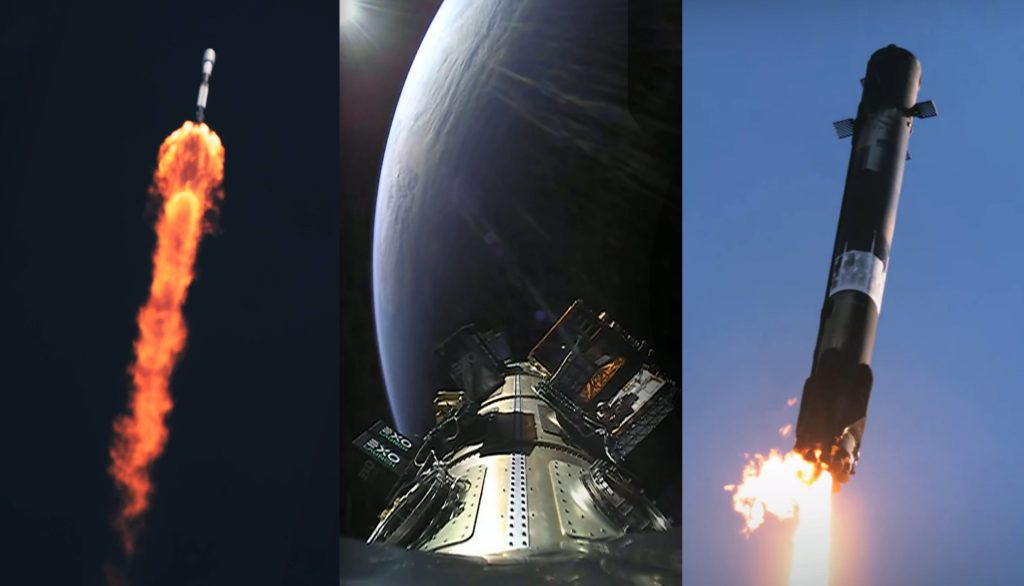

News
SpaceX eyes West Coast for first Starlink launch of 2023
SpaceX is reportedly planning to launch its first Starlink mission of 2023 from California’s Vandenberg Space Force Base.
Next Spaceflight reports that SpaceX is preparing to launch Starlink 2-4 no earlier than (NET) 6:54 pm PST on January 8th January 9th, almost eight weeks after unspecified issues with a Falcon 9 rocket indefinitely delayed the mission. While it’s impossible to confirm if the entire two-stage rocket and fairing were transferred, the Falcon 9 booster originally assigned to launch Starlink 2-4 on November 18th, 2022 instead launched an Israeli Earth observation satellite six weeks later.
Thankfully, after a strange and abrupt surge of technical (and indefinite) launch delays in November and December, SpaceX managed to complete its last three Falcon 9 launches without issue. The successful launch of the Falcon 9 booster assigned to Starlink 2-4 further suggests that whatever caused that surge is mostly behind SpaceX. So will the belated launch of Starlink 2-4 itself.
The update that's rolling out to the fleet makes full use of the front and rear steering travel to minimize turning circle. In this case a reduction of 1.6 feet just over the air— Wes (@wmorrill3) April 16, 2024
Signs of a return to sure footing are good for SpaceX’s plans to double down on its extraordinary growth in 2022. SpaceX rounded out the year with 61 successful orbital launches – just one shy of doubling its still impressive 31-launch record in 2021. 61 launches were also enough for Falcon 9 and Falcon Heavy to tie an almost half-century-old Soviet record for the most annual launches completed by one family of rockets.
Merely repeating that feat in 2023 would be unprecedented in the history of spaceflight. But SpaceX and CEO Elon Musk have again set their sights high and are targeting up to 100 launches this year – a 64% increase over 2022. Though it sounds improbable and will be even more difficult to achieve, SpaceX’s plans for the first month of 2023 are almost exactly what one would expect to see from a single company attempting to launch (up to) 100 times in one year.
Off to the races
SpaceX kicked off 2023 with the launch of its sixth Transporter rideshare mission on January 3rd. Unofficial public manifests like Next Spaceflight and Ben Cooper report that SpaceX wants to launch Starlink 2-4 on January 8th 9th, as well as a batch of OneWeb satellites the day prior. SpaceX’s fifth Falcon Heavy launch is scheduled to follow as early as January 12th, and a Falcon 9 rocket could launch the US military’s sixth GPS III satellite on January 18th. One or two more Starlink missions and the Amazonus Nexus geostationary communications satellite could round out the second half of the month.

Ultimately, whatever caused SpaceX’s late-year uptick in delays proved to be mostly inconsequential. Despite missing opportunities for an even busier year and not launching once between November 26th and December 8th, December 2022 was SpaceX’s first seven-launch calendar month on record. If just one of SpaceX’s most chronically delayed missions (Hakuto-R) had avoided delays, it’s likely the company would have launched eight times in one month – equivalent to 96 launches if sustained for a year.
Meanwhile, if Starlink 2-4 does launch on January 8th 9th, it will beat SpaceX’s 11.75-day West Coast turnaround record by 21 hours. If its two East Coast Falcon pads can also push the envelope throughout the year and the company can keep its extraordinary failure-free streak going, SpaceX has a surprisingly legitimate opportunity to launch 80, 90, or even 100 Falcon rockets in 2023.

News
Tesla (TSLA) receives “Buy” rating and $551 PT from Canaccord Genuity
He also maintained a “Buy” rating for TSLA stock over the company’s improving long-term outlook, which is driven by autonomy and robotics.

Canaccord Genuity analyst George Gianarikas raised his Tesla (NASDAQ:TSLA) price target from $482 to $551. He also maintained a “Buy” rating for TSLA stock over the company’s improving long-term outlook, which is driven by autonomy and robotics.
The analyst’s updated note
Gianarikas lowered his 4Q25 delivery estimates but pointed to several positive factors in the Tesla story. He noted that EV adoption in emerging markets is gaining pace, and progress in FSD and the Robotaxi rollout in 2026 represent major upside drivers. Further progress in the Optimus program next year could also add more momentum for the electric vehicle maker.
“Overall, yes, 4Q25 delivery expectations are being revised lower. However, the reset in the US EV market is laying the groundwork for a more durable and attractive long-term demand environment.
“At the same time, EV penetration in emerging markets is accelerating, reinforcing Tesla’s potential multi‑year growth runway beyond the US. Global progress in FSD and the anticipated rollout of a larger robotaxi fleet in 2026 are increasingly important components of the Tesla equity story and could provide sentiment tailwinds,” the analyst wrote.
Tesla’s busy 2026
The upcoming year would be a busy one for Tesla, considering the company’s plans and targets. The autonomous two-seat Cybercab has been confirmed to start production sometime in Q2 2026, as per Elon Musk during the 2025 Annual Shareholder Meeting.
Apart from this, Tesla is also expected to unveil the next-generation Roadster on April 1, 2026. Tesla is also expected to start high-volume production of the Tesla Semi in Nevada next year.
Apart from vehicle launches, Tesla has expressed its intentions to significantly ramp the rollout of FSD to several regions worldwide, such as Europe. Plans are also underway to launch more Robotaxi networks in several more key areas across the United States.
News
Waymo sues Santa Monica over order to halt overnight charging sessions
In its complaint, Waymo argued that its self-driving cars’ operations do not constitute a public nuisance, and compliance with the city’s order would cause the company irreparable harm.

Waymo has filed a lawsuit against the City of Santa Monica in Los Angeles County Superior Court, seeking to block an order that requires the company to cease overnight charging at two facilities.
In its complaint, Waymo argued that its self-driving cars’ operations do not constitute a public nuisance, and compliance with the city’s order would cause the company irreparable harm.
Nuisance claims
As noted in a report from the Los Angeles Times, Waymo’s two charging sites at Euclid Street and Broadway have operated for about a year, supporting the company’s growing fleet with round-the-clock activity. Unfortunately, this has also resulted in residents in the area reportedly being unable to sleep due to incessant beeping from self-driving taxis that are moving in and out of the charging stations around the clock.
Frustrated residents have protested against the Waymos by blocking the vehicles’ paths, placing cones, and “stacking” cars to create backups. This has also resulted in multiple calls to the police.
Last month, the city issued an order to Waymo and its charging partner, Voltera, to cease overnight operations at the charging locations, stating that the self-driving vehicles’ activities at night were a public nuisance. A December 15 meeting yielded no agreement on mitigations like software rerouting. Waymo proposed changes, but the city reportedly insisted that nothing would satisfy the irate residents.
“We are disappointed that the City has chosen an adversarial path over a collaborative one. The City’s position has been to insist that no actions taken or proposed by Waymo would satisfy the complaining neighbors and therefore must be deemed insufficient,” a Waymo spokesperson stated.
Waymo pushes back
In its legal complaint, Waymo stated that its “activities at the Broadway Facilities do not constitute a public nuisance.” The company also noted that it “faces imminent and irreparable harm to its operations, employees, and customers” from the city’s order. The suit also stated that the city was fully aware that the Voltera charging sites would be operating around the clock to support Waymo’s self-driving taxis.
The company highlighted over one million trips in Santa Monica since launch, with more than 50,000 rides starting or ending there in November alone. Waymo also criticized the city for adopting a contentious strategy against businesses.
“The City of Santa Monica’s recent actions are inconsistent with its stated goal of attracting investment. At a time when the City faces a serious fiscal crisis, officials are choosing to obstruct properly permitted investment rather than fostering a ‘ready for business’ environment,” Waymo stated.
News
Tesla FSD v14.2.2 is getting rave reviews from drivers
So far, early testers have reported buttery-smooth drives with confident performance, even at night or on twisty roads.

Tesla Full Self-Driving (Supervised) v14.2.2 is receiving positive reviews from owners, with several drivers praising the build’s lack of hesitation during lane changes and its smoother decision-making, among others.
The update, which started rolling out on Monday, also adds features like dynamic arrival pin adjustment. So far, early testers have reported buttery-smooth drives with confident performance, even at night or on twisty roads.
Owners highlight major improvements
Longtime Tesla owner and FSD user @BLKMDL3 shared a detailed 10-hour impression of FSD v14.2.2, noting that the system exhibited “zero lane change hesitation” and “extremely refined” lane choices. He praised Mad Max mode’s performance, stellar parking in locations including ticket dispensers, and impressive canyon runs even in dark conditions.
Fellow FSD user Dan Burkland reported an hour of FSD v14.2.2’s nighttime driving with “zero hesitations” and “buttery smooth” confidence reminiscent of Robotaxi rides in areas such as Austin, Texas. Veteran FSD user Whole Mars Catalog also demonstrated voice navigation via Grok, while Tesla owner Devin Olsen completed a nearly two-hour drive with FSD v14.2.2 in heavy traffic and rain with strong performance.
Closer to unsupervised
FSD has been receiving rave reviews, even from Tesla’s competitors. Xpeng CEO He Xiaopeng, for one, offered fresh praise for FSD v14.2 after visiting Silicon Valley. Following extended test drives of Tesla vehicles running the latest FSD software, He stated that the system has made major strides, reinforcing his view that Tesla’s approach to autonomy is indeed the proper path towards autonomy.
According to He, Tesla’s FSD has evolved from a smooth Level 2 advanced driver assistance system into what he described as a “near-Level 4” experience in terms of capabilities. While acknowledging that areas of improvement are still present, the Xpeng CEO stated that FSD’s current iteration significantly surpasses last year’s capabilities. He also reiterated his belief that Tesla’s strategy of using the same autonomous software and hardware architecture across private vehicles and robotaxis is the right long-term approach, as it would allow users to bypass intermediate autonomy stages and move closer to Level 4 functionality.








